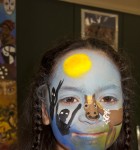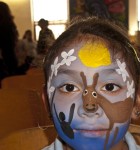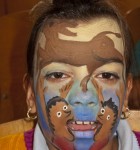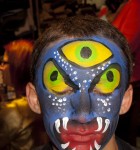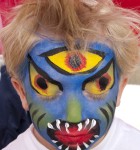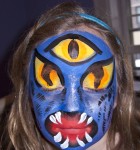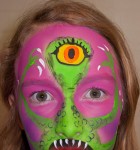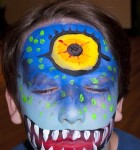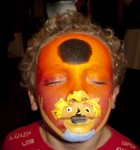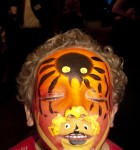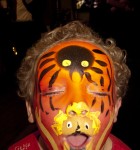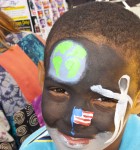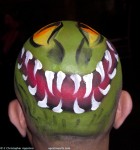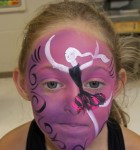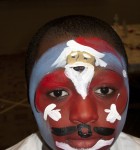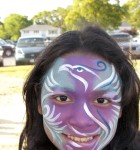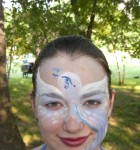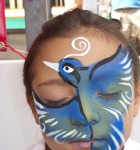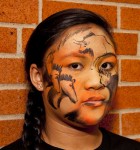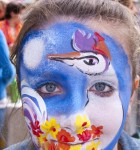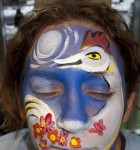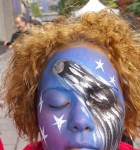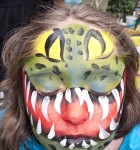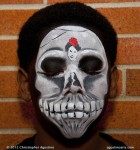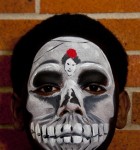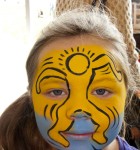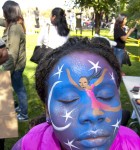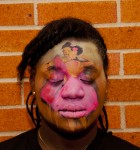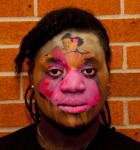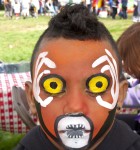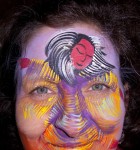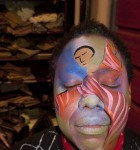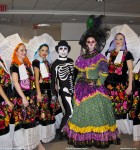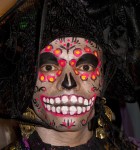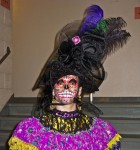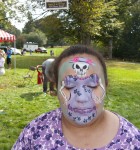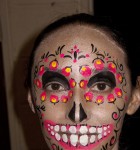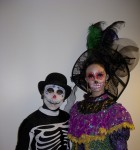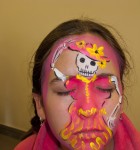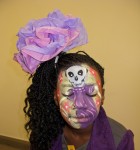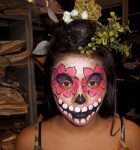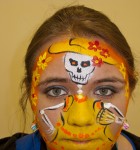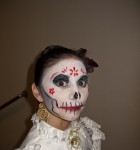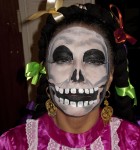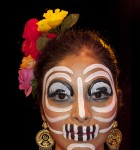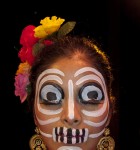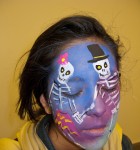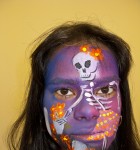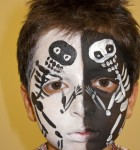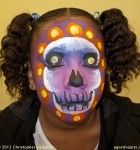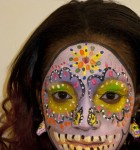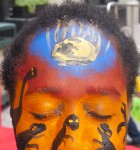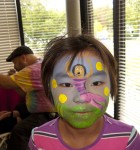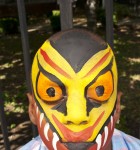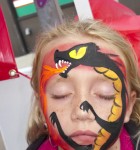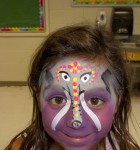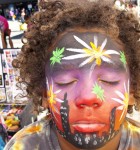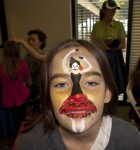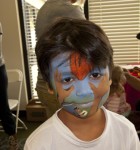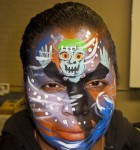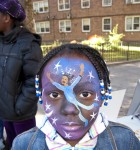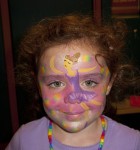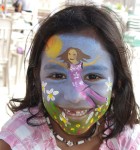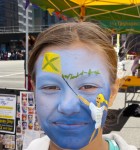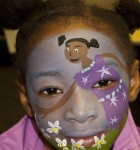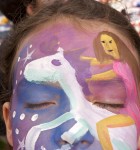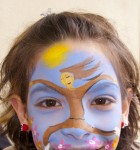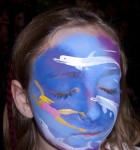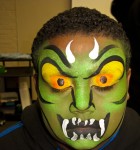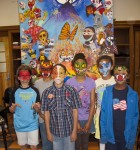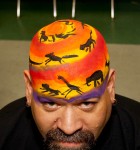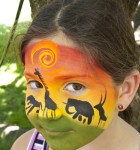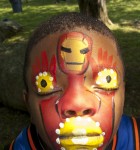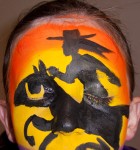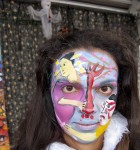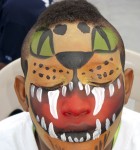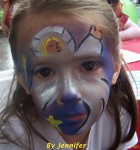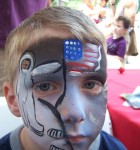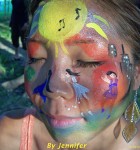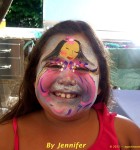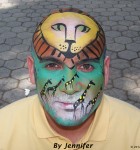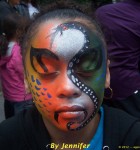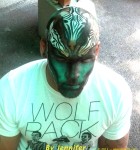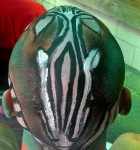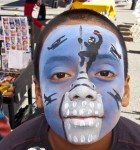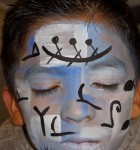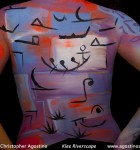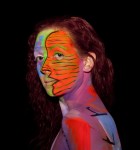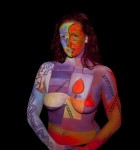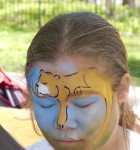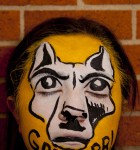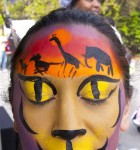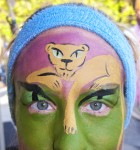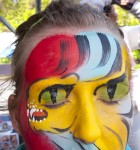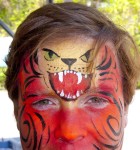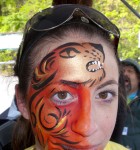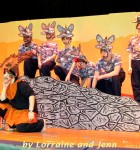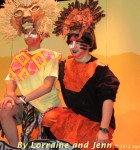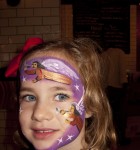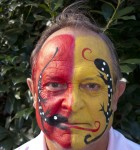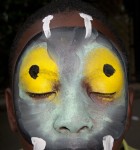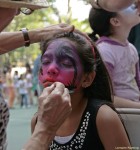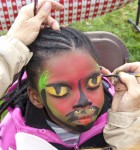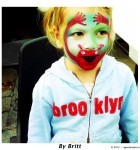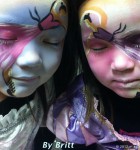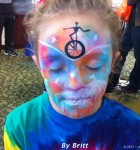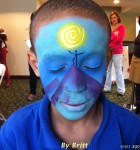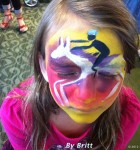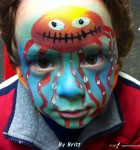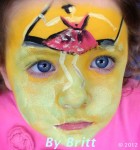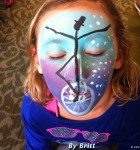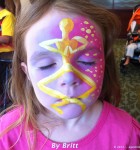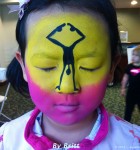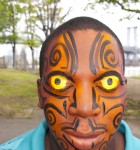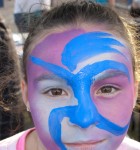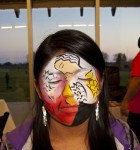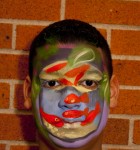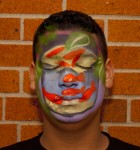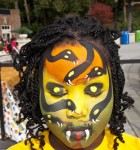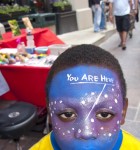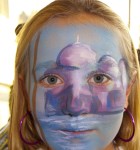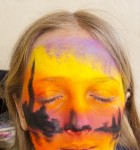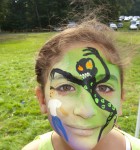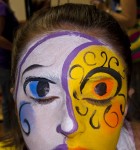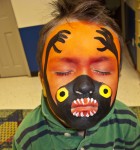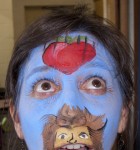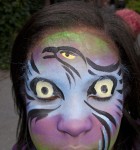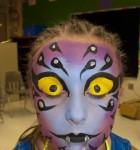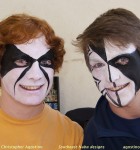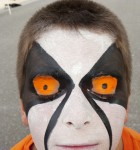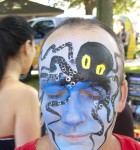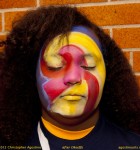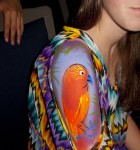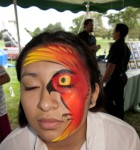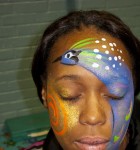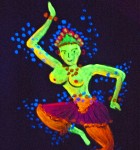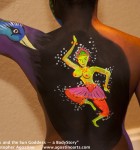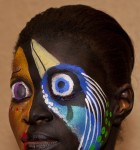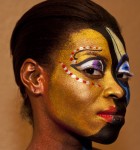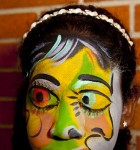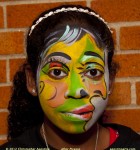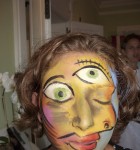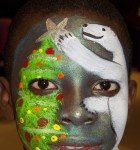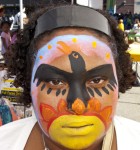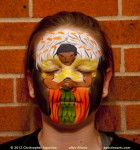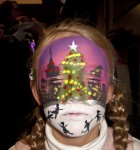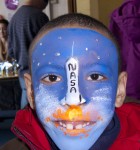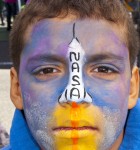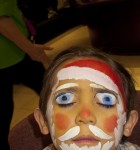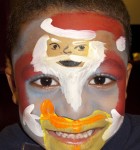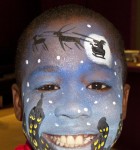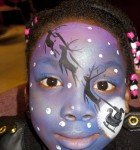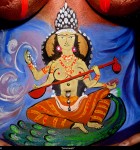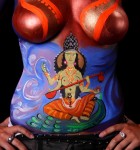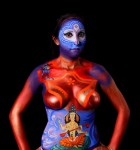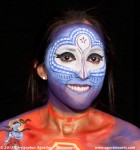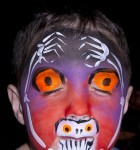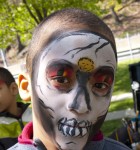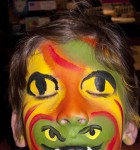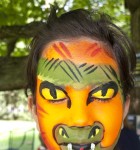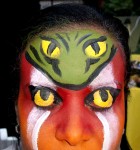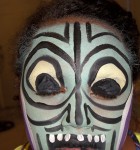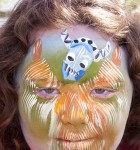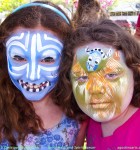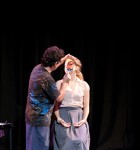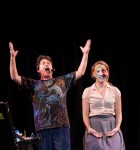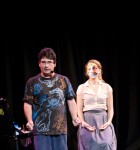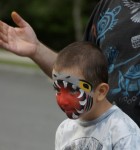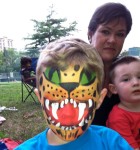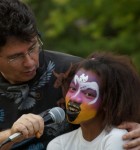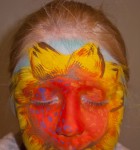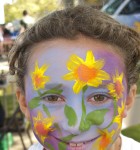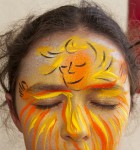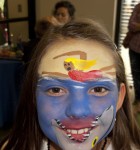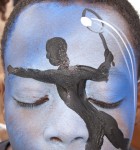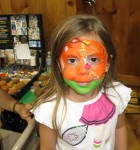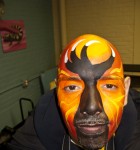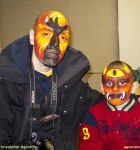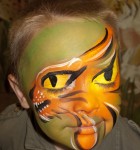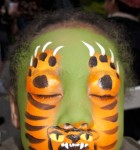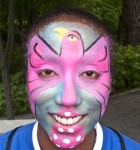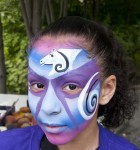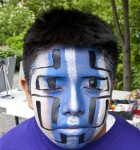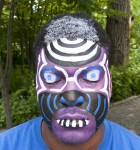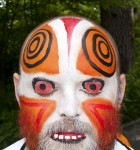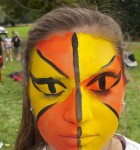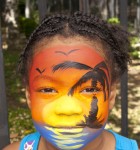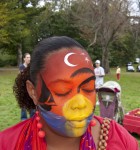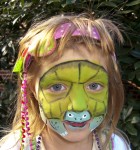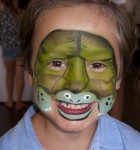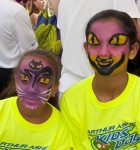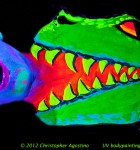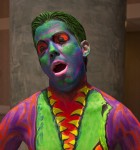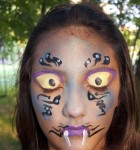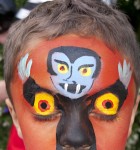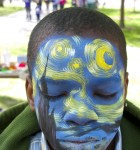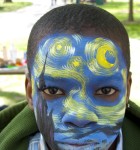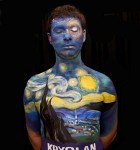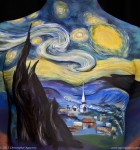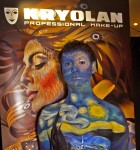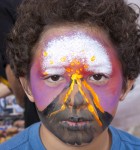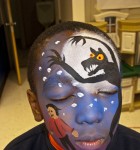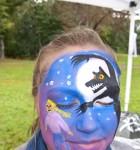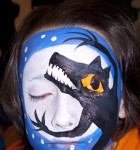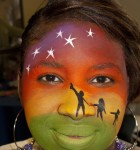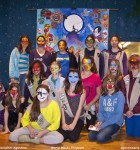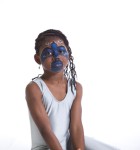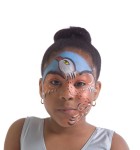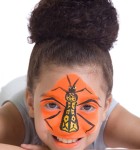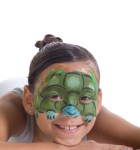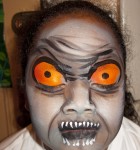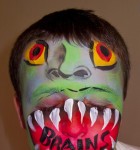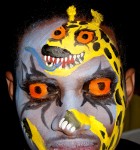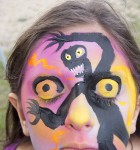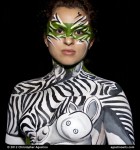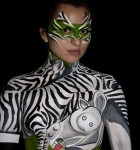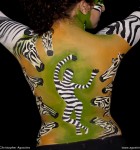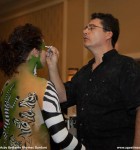
Abalone Shell from Blombos Cave- Credit: Science/AAAS
by Christopher Agostino
“Archaeologists in South Africa uncovered two 100,000-year-old abalone shells and assorted bones and stones that served as toolkits to make some sort of ochre-based compound. The mixture may have been used as a paint or adhesive. It’s the oldest evidence of humans making a complex compound, and even the oldest evidence of humans using containers.” – from LiveScience article (see article link below)
What I am quite willing to label as “the oldest bodypainting kit ever” was recently discovered in Blombos Cave in South Africa. 2 abalone shells with remnants of ground reddish ochre pigments that had been mixed with some kind of binding agent or liquid, found with implements for grinding the pigment and mixing and applying. Sounds like a makeup kit to me. 100,000 years old—which puts it maybe 40,000 years earlier than any other such discovery, and 20,000 years earlier than that etched ochre stone from Blombos considered the earliest existent example of symbolic art. Blombos Cave is a story in itself, and I’ll get to that below.
But first the question: if 100,000 years ago our earliest ancestors were mixing paint, what were they painting? My perspective makes me confident they were mixing pigments to paint themselves—ochre pigments like these are still used as traditional bodypaint in some places (although ochre was also possibly used as an ancient adhesive). The anthropologists that make the case for bodyart that long ago point to evidence such as ochre pigment found on bones in burial sites, the universal use of bodyart in tribal cultures and the general rule that when humans appear in ancient art, such as rock paintings, they are depicted with markings like bodyart on their forms, or with animal masks or other transforming imagery. The ubiquitous silhouette hand images that appear in cave art around the world would have been made by placing your hand against the rock and blowing ochre pigment onto it—probably through a hollow reed, the first air-brush—that would paint your hand as it made the silhouette on the wall. One researcher found that if he took the patterns of symbols on isolated sections of a certain painted cave and transferred them to a body they would wrap around in a repeating pattern, as if the cave painter had used his own body markings as the source of the design. In The Painted Body, Michel Thévoz says that the one universal constant in pictorial art is objects painted in a symmetry that follows the morphology of the body: “It is as if the artists of the most diverse tribes and people had all proceeded by transferring onto the wall…or whatever the object being painted, a composition originally conceived as a face or body decoration.” My own view is that art is intrinsically a statement of identity, and our bodies are our most personal vehicles for self-identity, so art has always been linked directly to our bodies, to how we present our self-identity.
The second question is, why did we start painting ourselves? There is no way to know this one. Since I like stories, I think about it in those terms, but one thing to remember is that we are talking about cultural developments that would have happened over a course of many generations and perhaps thousands of years. Craig Tracy once told me a story of how he imagined bodyart may have started, with a couple of our ancestors fooling around. One gets a streak of mud on him and it strikes the other as funny so he laughs. The first one says, oh yeah and puts bigger streak on the laughing one, leading to a mud fight in which they are both laughing and all marked up. The fellows back at the cave get a kick out of it and start playing the game too.
I’ve wondered if it didn’t begin very practically, as camouflage, marking the skin to blend into the dappled forest, or striping it to hide in the grasslands. And then I can imagine how a successful hunter might stylize the markings and wear them as a status symbol, and I can see that over time leading to an establishment of symbolic skin marking as vehicles for individual status and tribal identity. Camouflage and enhancing sexual attraction are both found as reasons in the animal kingdom for creatures that alter their appearance, changing color or decorating themselves. It’s also occurred to me that as a species we humans are relatively dull looking, no spots or stripes, feathers or bright colors, and as we came to be increasingly self-aware we may have begun to decorate ourselves as an aesthetic act, and as an exploration of individuality within the group.
We really can’t know anything for sure about anything going that far back. In his writings on origins of human culture, Joseph Campbell makes the point that so much of our theories are based on what survives as opposed to what doesn’t—really only rocks and bones survive from truly ancient times, and only those in protected places, buried in caves. We have no surviving evidence for what art we created on wood or animal skin, or our own skin. The earliest cave wall paintings, like Chauvet Cave, are already so technically and aesthetically sophisticated that we must have done a lot of painting before painting them.

Blombos Cave - The entrance to Blombos Cave, indicated by the white arrow, about 180 miles (300 kilometers) east of Cape Town. Credit: Magnus Haaland
As for Blombos Cave, it’s better to get the real anthropology from the real anthropologists, but from an artist/storyteller’s perspective, here is one of the most amazing stories there could be to tell, perhaps the primal story: Comparative DNA and other studies of people all over the world indicate that we are all descended from one small band of ancestors. Though there were numerous early human species millions of years ago and many migrations of such species, eventually all of those other species came to an end. All of us, all modern humans, come from one isolated group which arose in Africa, multiplied and gradually filled the world through migration. It was this one group that made the “great leap” and achieved that final spark of intelligence and consciousness that makes us who we are. Although this one ancestral group was part of a much larger population of early Homo Sapiens, about 140,000 years ago glaciers covered most of the world and massive droughts hit Africa, remaining over the course of thousands of years, until the only surviving Homo Sapiens populations were withdrawn into the few remaining habitable sites in Africa. Researchers theorize that the struggle to survive in such difficult climatic conditions accelerated the development of these ancestral humans—to survive they required greater intelligence and ingenuity, and the ability to pass increasingly complex information from generation to generation.

Discovery-The excavation site at the time when the 100,000-year-old toolkits were uncovered Credit: Science/AAAS
Along one such remaining habitable place, the Pinnacle Point region of South Africa, caves (like Blombos) have evidence of a long period of human occupation which remained continuous through that difficult climactic period, and anthropologists, going back in time as they dig down through the layers of artifacts, see in this area a timeline of progressive human development from a technology equivalent to our Neandertal predecessors through to increasingly complex developments seen at this site tens of thousands of years earlier than at any other site in the world, including the earliest indications of art and symbolic activity, such as the pigment processing from 100,000 years ago.
Perhaps 60,000 years ago, as the world climate improved, this new type of human began to spread around the world, carrying with them an ability to understand and re-imagine the world through art and symbology. As an amateur folklorist I’m aware of how many underlying aspects of world cultures seem related, how many folktales touch universal themes, and I imagine that these earliest ancestors also carried with them a fundamental human culture of art, music and stories.

Ancient Tools- One of the abalone shells with the quartzite grindstone found nestled inside. Credit: Grethe Moell Pederson

Shell Toolkit- The other abalone toolkit under excavation Credit: Science/AAAS
Learn more about my work at my Body Painting Page https://thestorybehindthefaces.com/body-painting/


